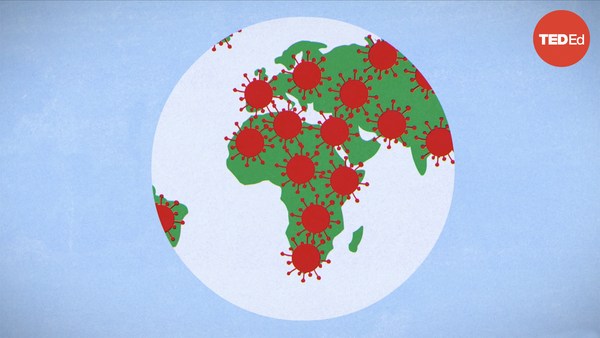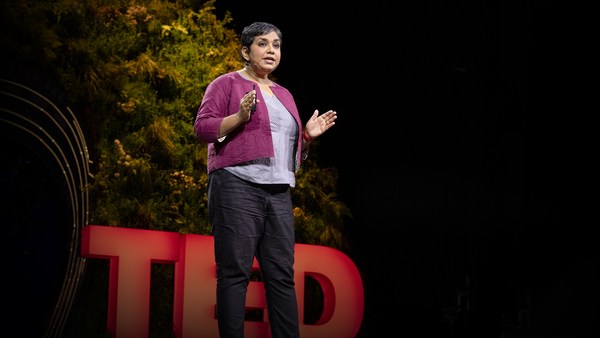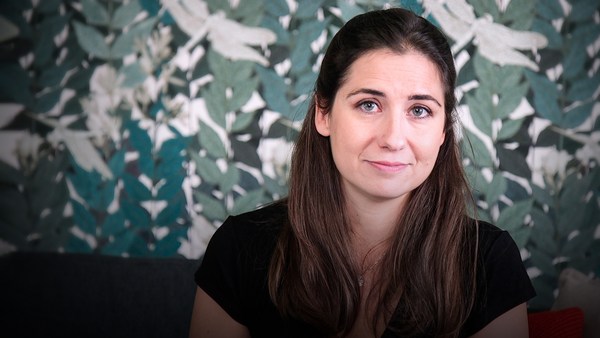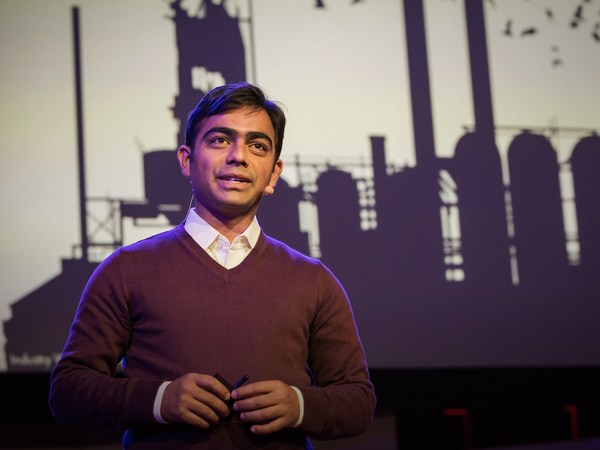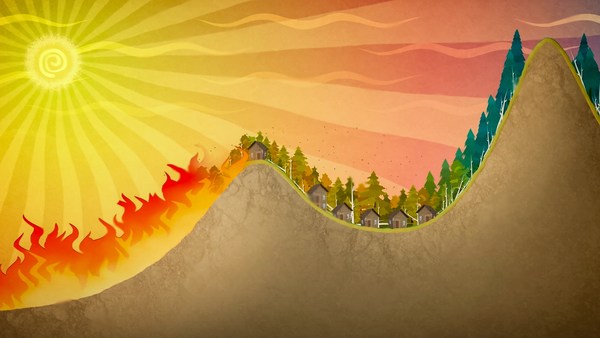I have a tendency to overshare when I first meet people. So in keeping with that habit, I wanted to share that I'm a medical oddity. I'm a doctor who specializes in saving forests. My journey has been unusual. And through it, I've learned how vital tropical forests are for our health.
As soon as I finished my internal medicine training, I traded in my scrubs for a hazmat suit. I joined the Epidemic Intelligence Service at the Centers for Disease Control and Prevention, and for nine years, I was a disease detective. I chased outbreaks around the world. I trekked through the jungle to research a bat hunting festival. I even vaccinated raccoons from an airplane.
On most days, it was my dream job. But there were others when what I saw was a nightmare. Like when I went to West and Central Africa to help fight the two biggest Ebola epidemics ever. I came back from both of those deployments with the same feeling. That our reactive approach to public health is inherently flawed. We focus on preparing for outbreaks so that we can respond quickly, but it's rarely that easy. Maybe a virus, like the one that causes COVID, spreads between people before they know they're sick. Maybe people choose to not take a safe and effective vaccine. And before we know it, the outbreak grows into an epidemic or even pandemic.
In other words, we act as if outbreaks are inevitable. If you ask me, this is medical negligence. Preparing and responding are critical, no doubt, but alone, they're not enough. This begs the question: What if we could also prevent outbreaks before they even begin? Well, there's good news. We can. And how we do so may surprise you.
Some researchers believe the West African Ebola epidemic began with an axe. Communities in rural Guinea, for their survival, had no choice but to clear forests for farms. Then, in 2013, an 18-month-old boy died of Ebola. He is believed to have caught the virus from bats that lived in a hollow tree where he played. Put another way, the virus likely spilled over from bats into this boy, making him patient zero. From there, Ebola spread, killing more than 11,000 people in West Africa.
Ebola's animal origins, however, aren't unique. All five viral pandemics from 1918 through 2009 can be traced to animals, and the same is likely true for COVID. Perhaps most concerningly, the estimated number of undiscovered viruses circulating in animals that could potentially spill over is over 600,000.
Spillover is also becoming more common because of what we humans are doing: wildlife trade, industrial-scale animal farms and, my focus today, clearing of tropical forests.
Changes in the way land is used, particularly deforestation, may be the single biggest driver of new animal-borne diseases. There are three key ways that deforestation leads to disease. First, the animals that survived deforestation, such as some types of bats, tend to be ones that can live alongside people. For whatever the reason, these animals often carry germs that can infect us.
Second, when people move into deforested areas, they come into closer contact with wildlife, creating opportunities to pass germs back and forth.
Finally, animals are more likely to spread disease when they're stressed from losing their homes.
To make matters worse, the threat of infectious disease is only growing as our planet warms. Over half of known infectious diseases in humans have been aggravated by climate change at some point. The World Health Organization even considers climate change the greatest threat to human health we face today.
Now, I know what some of you are thinking. Would anybody really miss these guys? If we killed the bats, wouldn't that solve our problem? Of course not. And I'm not just saying that because bats are my second favorite group of animals after snakes.
(Laughter)
If anything, we'd just get exposed to more viruses when killing them. We also depend upon bats for pollination and insect control.
But there is something we can do right now that would have an immediate impact on health and climate. What's more, it'll cost way less than fighting the next pandemic. So what is this solution? Protecting tropical forests.
People don't clear-cut forests because it's fun work. Corporations may do it to make money in global markets. Rainforest communities, many of which are very poor, may do it too, just to survive. Understanding these dynamics gives us a road map to reverse it. In the early 2000s, for example, Brazilian government officials monitored forest loss with satellites and cracked down on illegal deforestation. They returned territory to Indigenous peoples who have successfully managed the Amazon for thousands of years. Under public pressure, businesses stopped selling beef and soy from recently deforested lands. These efforts paid off. From 2004 to 2012, deforestation in the Amazon plummeted by over 80 percent. Even better, agricultural output increased, dispelling the myth that there's a trade-off between forests and food.
But here's the tricky thing about deforestation. It's hyper local. There's no one-size-fits-all solution. That means, above all else, we need to listen. That may sound a little fluffy, but bear with me.
In Indonesian Borneo, a nonprofit called Health and Harmony conducted what it calls radical listening to arrive at community-designed solutions to deforestation. Communities concluded that deforestation could be reversed if they had quality health care and better jobs. So the nonprofit, along with local partners, built a clinic. They trained community members to farm organically. They invested in youth education. Lo and behold, the communities were right. Over the next decade, deforestation dropped. Meanwhile, health improved. Infant mortality decreased by two thirds.
What we see here is that people and planet don't need to be in conflict. We have solutions to address deforestation. And if we implement them wisely, we can prevent outbreaks and slow climate change.
Preventing outbreaks by saving nature will also help ensure that income doesn't dictate outcome. The tools we use to respond to outbreaks -- medicines, vaccines, even information -- are inequitably distributed. In contrast, prevention benefits everyone equally.
So how can we accelerate uptake of preventative solutions to outbreaks? By building bridges between the health, climate and conservation sectors. Pandemics, climate change and environmental destruction feed off each other. But like the health sector, the climate sector hasn't fully recognized the value of nature. Nature-focused projects, for example, can get us over 30 percent of the emissions reductions needed to reach our climate goals, but only receive about five percent of climate funding.
In my own work, I was also conditioned to overlook nature. For years, I was made to feel guilty for caring about species other than humans. Like it was a betrayal of the oath I took when I became a doctor. Right after I finished my training, I met a world-renowned physician and scientist who I looked up to for years. I was excited to ask him for his thoughts on how to improve human well-being while safeguarding the planet. He looked at me and slowly said, "I don't care about polar bears." At first I was shocked. And then I felt embarrassed. But from what I've seen from fighting outbreaks for over a decade, I'm finally comfortable admitting that I do care about polar bears. And bats.
(Applause)
And bats and forests and people. We all need to. Because there is no human health or animal health or environmental health. They're one and the same.
In West Africa, it may have taken just one infected animal to spark an Ebola epidemic that killed more than 11,000 people. But it will take everyone to sustain the delicate ecological balance that we all depend upon.
Thank you.
(Applause)
